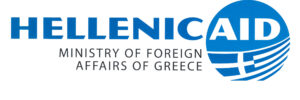The present document synthesizes the 62 voluntary submissions and reflects how the intergovernmental bodies are responding to the theme of the 2019 HLPF.
While the principle of leaving no one behind is widely referred to, five main areas have been identified as crucial to empower those being left behind:
(i) Economic vulnerability: Ensuring that no one is left behind requires not only strong social policies but integrating the principle in the formulation of macroeconomic and fiscal, industrial and technological policies and of strategies in other relevant areas.
(ii) Conflicts, disasters and inequality: The negative consequences of disasters, climate change, and conflict are often mutually reinforcing. Accessible support services are required for all persons with disabilities, particularly in post-disaster reconstruction efforts.
(iii) Resource use: The conservation and wise management of cultural and natural heritage can address many challenges faced by the poorest and more vulnerable, providing shelter, access to food, water and other means of livelihood and decent employment.
(iv) Improving social integration: Systemic discrimination might arise because of legal rules, policies or practices, or from predominant cultural attitudes and customary practices that create relative disadvantages for some groups and privileges for others. Social integration is closely linked to the level of cultural growth, civic sense and to diversity management capacities.
(v) Empowering women and girls: Women continue to experience numerous difficulties in accessing justice legal complaint mechanisms which has political, economic, and cultural ramifications that curtail women’s role as actors and beneficiaries of development.
In the fourth year of implementation of the 2030 Agenda, progress is insufficient. The gaps and challenges likely to affect its achievement are similar to previous years, suggesting that enhanced efforts are required to overcome systemic issues impeding the transformation towards sustainable development that benefits all.
The cross-cutting and emerging issues are:
(i) Food insecurity: Food systems need to move toward mostly plant-based dietary patterns, dramatically reduce food losses and waste, and improve food production practices.
(ii) Disaster risk: Economic losses to disasters increasingly undermine the financing available for sustainable development.
(iii) Ecosystems degradation: Biodiversity-related official development assistance has steadily increased yet will likely only ever cover a small percentage of the investment needed.
(iv) Unsustainable resource use: Exposure to environmental health risks is unequally distributed, often related to socioeconomic characteristics.
(v) Migration dynamics: Migrants can contribute to overcoming inequality and be agents of sustainable development in countries of origin and destination.
(vi) Rapid urbanization: Cities are growing at a rapid pace, placing huge demands on infrastructure, services, job creation, and the environment.
(vii) Drug use: Global coverage of treatment for drug use disorder remains at low level. The prevention, early intervention and treatment, care, recovery and rehabilitation of substance abuse need to be strengthened.
(viii) Future of work: Stronger alignment between inclusive employment and inclusive education and skills policies is required.
(ix) Insufficient statistical capacity: It remains one of the key challenges for achieving the 2030 Agenda. The lack of comprehensive, reliable data and statistics is an underlying challenge in many areas, including demographic data.
While all SDGs are examined through the lens of the 2019 HLPF theme, some entities focused their contributions on the specific set of goals under review this year: SDG 4: Quality education and lifelong learning, SDG 8: Decent work and sustainable growth, SDG 10: Reduced inequalities, SDG 13: Climate action, SDG 16: Peaceful societies, justice and strong institutions, SDG 17: Means of implementation and global partnership.
Contributions received highlight that empowerment and inclusion are integral to the transformations needed to address deep-rooted inequalities and vulnerabilities spanning across the three dimensions of sustainable development. Empowerment is a context-specific, multi-dimensional construct, comprising both a process of strengthening people’s voice and institutions that enable people to exercise their rights. Strategies for inclusive sustainable development will need to consider the opportunities and challenges associated with trends in fertility, mortality and migration, which will affect the size and age structure of future populations.
The contributions highlight the need to seek synergies between the 2030 Agenda and the policy frameworks developed and pursued by these intergovernmental bodies. Progress has been made in strengthening global policy coherence and translating the latter into integrated regional and national policies for disaster risk reduction, climate change adaptation and sustainable development. However, in most countries, more efforts are required. The HLPF is encouraged to strengthen its guidance on achieving the SDGs through partnerships within the UN system.
More information:
